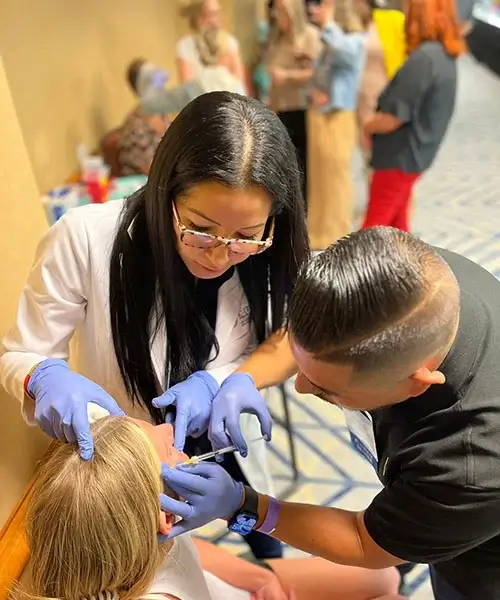Face Muscle Relaxers: A Look at Their Uses and Effects
By Dr. Stephen Cosentino
PRESIDENT OF EMPIRE MEDICAL TRAINING
Whether they know it or not, millions of patients receive facial muscle relaxer treatments every year. For most, these come in the form of botulinum type A injections, more commonly known by brand names like Botox®, Dysport®, and Xeomin®.
Botox and its rivals might not be the medications you think of when you hear the words “muscle relaxant,” but they’re very effective at temporarily paralyzing the targeted muscles and achieving patients’ desired results. They have non-cosmetic applications too.
Curious about how facial muscles respond to these treatments? Read on to learn about the types of face muscle relaxers and what to expect from your next procedure.
Types of Face Muscle Relaxers
Muscle relaxation injections can be divided into two categories: medications formulated with botulinum toxin A, and all other muscle-relaxing medications. Dermal fillers aren’t included in either category.
Botulinum Toxin Medications As Muscle Relaxant Treatments
Botox and its competitors, such as Dysport and Xeomin, are neuromodulators that temporarily paralyze and relax the muscles around the injection site. These muscles are often implicated in facial lines and wrinkles like crow’s feet, frown lines, and horizontal forehead lines. Small amounts (with the exact dose depending on the area) can noticeably reduce lines and wrinkles for three to four months at a time.
Botox is safe when properly administered by an experienced injector. To reduce the risk of adverse events and complications after treatment, be sure to work with a provider who has completed advanced Botox training coursework with an accredited medical education provider.
Also, be aware that many Botox injectors focus only on cosmetic applications. You may need to consult another provider for help treating musculoskeletal complaints like excessive sweating or chronic migraine.
Other Types of Face Muscle Relaxers
While not as widely used as Botox and its competitors, other medications can temporarily relax the facial muscles and achieve similar results.
There are two main types of medications that do this.
The first is injectable muscle relaxants like orphenadrine and oral muscle relaxants like tizanidine hydrochloride. Muscle relaxation is a primary function of these medications; many were developed specifically for this purpose. They may be used to treat a variety of medical and cosmetic complaints, including many for which Botox isn’t indicated.
Certain other medications aren’t prescribed for muscle relaxation but have muscle-relaxing effects, including tricyclic antidepressants (such as Elavil) and benzodiazepines (such as Xanax). In most cases, these medications were developed to treat non-muscular medical conditions, such as anxiety, schizophrenia, even cerebral palsy. Their muscle-relaxing action is a byproduct of their chemistry and should not be the primary reason they’re taken or prescribed.
For both types of “other” muscle relaxers, more research is needed to understand the effects on the small muscles of the face. Some are known to have serious side effects and complications; a few are associated with chemical dependency. If you’re considering muscle relaxer treatment for neck and facial wrinkles, consult your current medical provider to understand your options and determine how to proceed.


